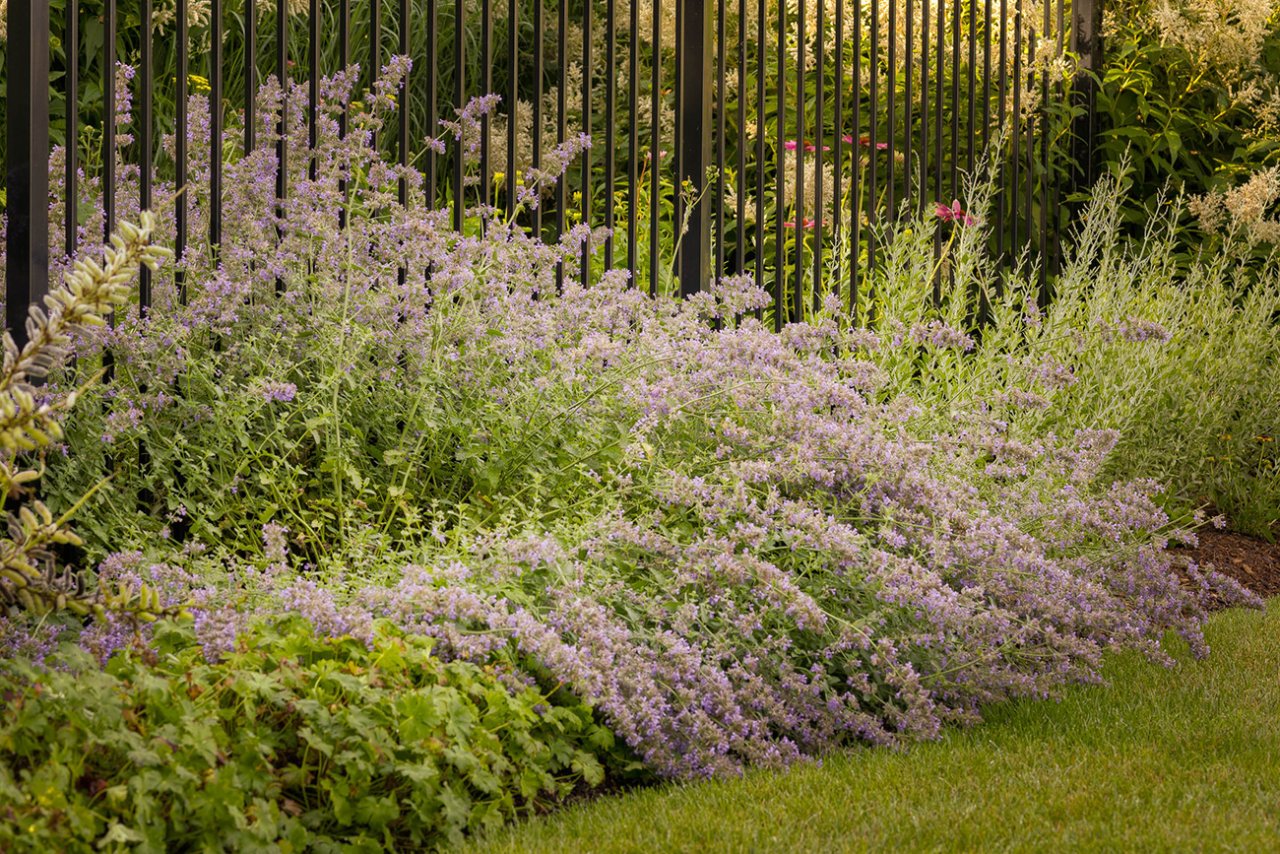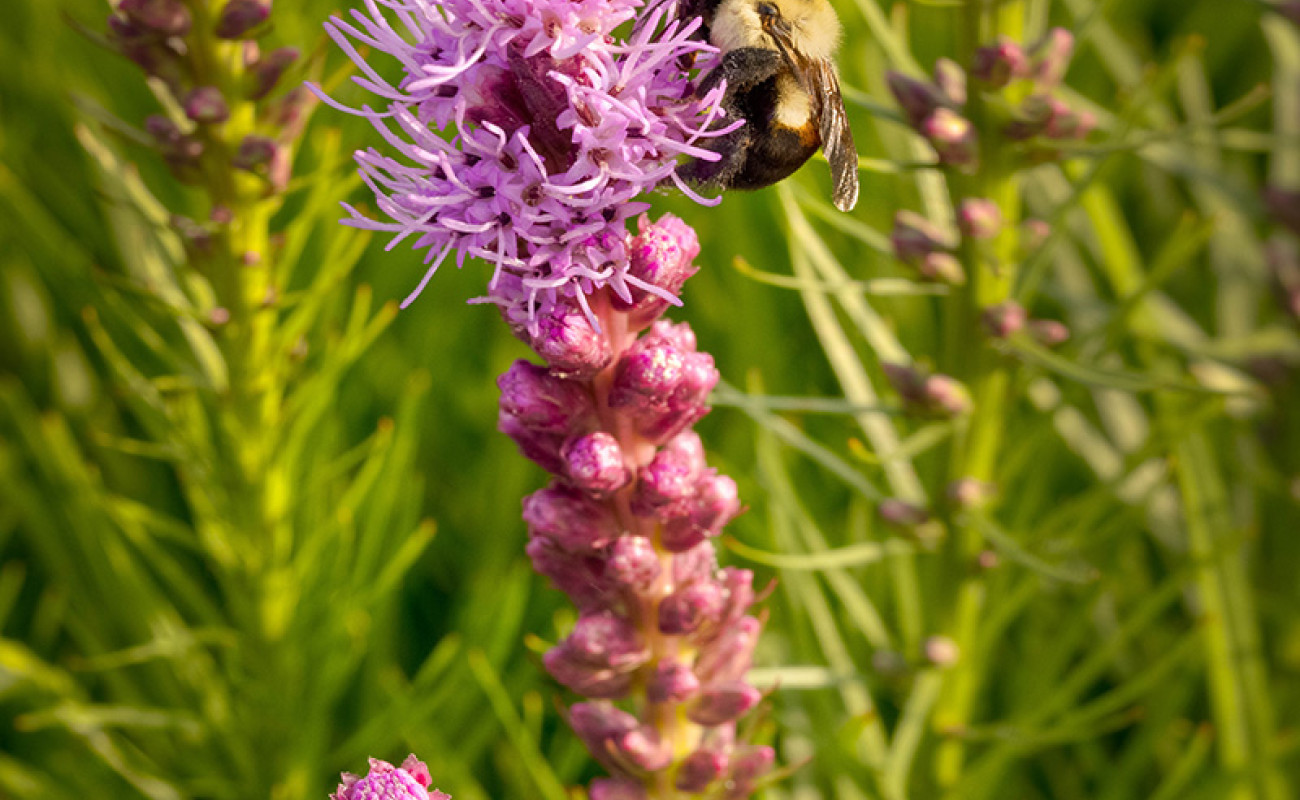Blog
A Visualization of Biodiversity

Increasing and sustaining biodiversity in the landscape is a fundamental aspect in countering Climate Change. It significantly improves the elementary aspects of the food web, develops a more robust and self-sustaining ecosystem, and mitigates the need for pesticides and damaging intervention practices. The results are landscapes that bring more birds and pollinators to our gardens for us to enjoy, while creating a healthier environment and requiring less maintenance.
Imagine this…
You’re sitting outside in your backyard on a late summer afternoon. You wiggle around to get comfortable in your favourite chair soaking in the heat of the sun that is set in a clear blue sky. You feel your body warming and feel the slight breeze on your face as you let your surroundings bring calm and relaxation to your body. Your gaze wanders between the wondrous varieties of plants in your beautiful gardens. On this summer afternoon you see the bold pink hues of the blossoming Bee Balm, a splash of purple from the Asters, a backdrop of Dogwoods and the canopy of a single oak tree. Your senses are filled with the earthy, fresh and attractive scent of flowers. As you watch the plants sway in the breeze you notice a monarch butterfly flying by and it lands on the bright orange blossom of a Butterfly Milkweed. Seeing the butterfly in your garden brings a smile to your face. As you're admiring the butterfly you hear a chorus of song birds and you look up and see them sitting in the branches of the Oak Tree. As you are surveying the tree you see a small nest in the lower branches, you get up, wander over and take a peek inside. The nest is holding six little birds, all with their mouths open waiting for their mother to come back and feed them. You recall as you're looking at the young birds that it is of great significance that the birds picked this tree. You return to your chair and get comfortable again. From your vantage point you see the colourful flowers, the butterflies and bees, hear the birds and you come to the conclusion that the garden is full of life. You are correct in your thoughts though you cannot see the other lives of the smaller beneficial insects that run your garden but they are there carrying out their role in the community of your garden. Outside breathing in the fresh air you are relaxed knowing your garden is beautiful but more importantly is supporting the biodiversity we require.
This picture of your backyard demonstrates how spending only a few minutes outside you are able to glimpse the biodiversity of your landscape. Keep this picture in your mind as we breakdown the key elements of biodiversity in your landscape.
Your garden carries out a variety of ecosystem services. These are required by humans and most other animals and are created either directly or indirectly by plants.
Element One: Planting to Support Pollinators
In the visualization we noticed a monarch butterfly flying by landing on the bright orange blossom of a Butterfly Milkweed. The butterfly in your garden brings a smile to your face as the butterfly is an indicator of a healthy environment because they are the foundation of the food web. A butterfly along with other insects, moths, bees, beetles, wasps, flies and birds like orioles and hummingbirds are the pollinators in your garden. These pollinators are attracted by the colour, shape and fragrance of flowers. Gardens that support pollinators include a wide variety of plants that include native, nativar and ornamental plant species that flower through a succession of blooming periods throughout the season. These flowers provide nectar that pollinators digest while dispersing the pollen throughout these plants.
Element Two: Planting to Attract Birds to the Garden
Remember the chorus of song birds that you saw sitting in the branches of the Oak Tree with the nest of young birds? Part of the attraction for songbirds is provision of food sources, including insects, seeds, fruit, nuts and nectar producing plants, as you will see in the upcoming example caterpillars are a specifically important food source for their young. Aside from food, birds are attracted by habitat (opportunities for nesting, shelter, and security), plants that provide nesting materials (such as native or ornamental grasses), and sources of water (as the sound brings in birds from a great range). The appeal of great gardens is their appeal to our multiple senses. The elements of song and the flash of colour provided by songbirds cannot be replicated.
You recall as you're looking at the young birds that it is of great significance that the birds specifically picked this tree. If you want song birds in your garden plant trees that host caterpillars (ex: Oak Trees) as they are the primary source of food for their young. Chickadees are an example where a bird rears their young during reproduction primarily on nestling caterpillars, the larvae of moths and butterflies. Due to this need, you will not find chickadees where there are not enough caterpillars to bring a clutch of eggs to independence from parental care. Parents feed nestlings for the first 16-18 days until they leave the nest, the amount of caterpillars needed for this time period can range from 6,000-9,000 depending on the size of the clutch of babies. The parents will also feed the bird for another 30 days after fledging, which we do not know the number of caterpillars needed for that period of time. Chickadees are a small bird example, so you can only imagine what the numbers could look like for larger birds or whole flocks of birds. If instead you had a Ginkgo tree in your backyard you may not see any birds as the Ginkgo tree hosts only one moth and butterfly caterpillar species.
Element Three: Planting to Host Butterfly and Moth Species
This is tied into the two previous elements. The key element that ties it together is that these plants host moth and butterfly species. The energy of the sun is used by plants to create nutrients through the process of photosynthesis. This energy is transferred to animals that eat plants or those who in turn eat them. This transference of the sun’s energy is an essential foundation of the Food Web. By intentionally including plants that attract butterflies and moths to our gardens, we can make a significant positive impact by increasing the biodiversity of our communities. These gardens are filled with butterflies and songbirds for us to enjoy.
Element Four: Planting to Support Beneficial Insects
It is not necessarily always seen within your garden unless you get up close and personal. These are the beneficial insects which prey on insects harmful to plants. By including these plant species we can mitigate or eliminate the need for external insect control measures such as chemical pesticides. These beneficial insects like ladybugs or lacewings remove the unwanted pests from your yard while also transferring energy from plants to animals.
The plants hold all these elements together. As seen within the visualization we gazed at the bold pink hues of the blossoming Bee Balm, a splash of purple from the Asters, a backdrop of Dogwoods and the canopy of a single oak tree. This displays the importance of the right plants for the right insects resulting in increasing insect biodiversity in turn increasing pollinators, moths, butterflies and bird biodiversity creating a garden that is full of life.
Posted: February 25th, 2022
View More Posts